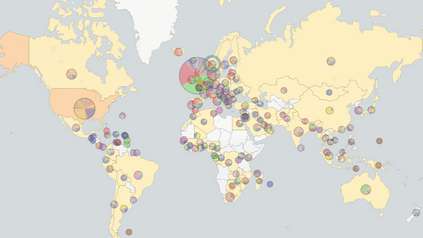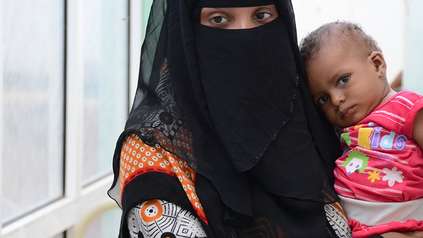New cholera substrains in Bangladesh uncovered by genomic surveillance confirm the importance of vaccination
Researchers have uncovered two new cholera substrains in a displaced refugee population in southern Bangladesh, where a pre-emptive mass vaccination campaign of over one million refugees was successful in preventing an epidemic. They also showed that the cholera bacterium initiating this campaign was the high risk pandemic strain that has caused outbreaks of cholera globally.
In a new study, published in Nature Communications, a team led by the Wellcome Sanger Institute and the International Centre for Diarrhoeal Disease Research, Bangladesh (icddr,b), used whole genome sequencing to analyse and track cholera strains in the Rohingya Refugee population in Southern Bangladesh.
By analysing 223 cholera samples, collected between 2017 and 2019, researchers identified that the main strain circulating was 7PET (1) – one that has already caused millions of deaths worldwide in a pandemic that has been ongoing since the 1960s.
The work also uncovered two new cholera sublineages of this virulent strain, 7PET, one with a global presence and another found in Asia and the Middle East. These two cholera sublineages also affect people differently, with differences in the number of purging events (2) or types of stool, for example. Researchers showed variations in the bacterium’s genetic code, which could explain why each strain presents a different disease pattern. This also proved that a mass vaccination campaign at the refugee site was vital and justified.
Being able to assign the risk of causing a major disease outbreak for each unique lineage ensures public health officials can prepare for epidemics, especially for vulnerable populations such as those in refugee camps.
It is estimated that there are 1.3 to 4 million cases of cholera annually, and 21,000 to 143,000 deaths worldwide due to this disease. If left untreated, it is quickly lethal (3). Access to safe water and sanitation is critical to prevent and control the transmission of cholera, meaning that less affluent communities are more exposed to this disease. In Bangladesh, cholera is endemic, with an estimated 66 million people at risk. Differentiating lineages of the bacterium, Vibrio cholerae, which causes cholera can be difficult or impossible to do accurately without genomic data.
“It’s important that we demonstrate how genomics can be used to track the strains of cholera that are circulating in different parts of the world. This is the first time that we have this type of evidence and it is vital in helping public health authorities make the right decisions to ensure health in vulnerable populations.
“In Bangladesh, the 2017 vaccination intervention was one of the largest cholera vaccination campaigns in decades, and what our study shows is that, without a vaccine intervention, the risk of an epidemic in Cox’s Bazar would have been very high.”
Dr Alyce Taylor-Brown, postdoctoral fellow at the Wellcome Sanger Institute and first author of the study
The study shows that genomic surveillance of cholera during a mass vaccination campaign can help public officials make informed decisions. In this case, the genomic data gave vital information about the specific strain in circulation within the community to public health officials, confirming that the vaccination campaign was targeting a more virulent form of the bacterium. These campaigns have continued through to December 2021, with seven more successful campaigns since 2014.
“This study is important as it shows that not only is mass vaccination crucial in Bangladesh for stemming outbreaks within a very short time, but also that genomic and epidemiological surveillance is a necessary tool to aid vaccine strategy when vaccines are in short supply as is the present case. For the future, we are left with a great opportunity. Our work showed that the cholera strains isolated from the refugee population were closely related to strains found in Dhaka, suggesting there is local transmission both within and between the refugee camps and the host population in Bangladesh. By understanding this further we will be able to get a clear picture of how the disease is spread in Bangladesh and what further actions can be taken to stop it.”
Dr Firdausi Qadri, Acting Senior Director, Infectious Diseases Division at icddr,b, and senior author of the study
“The vaccination campaign was highly successful, initiated as soon as the humanitarian crisis took place. Like all interventions, it’s impossible to know what would have happened if nothing had been done. But what is clear is that this strain of Vibrio cholerae present here has caused mass outbreaks elsewhere in the world resulting in the loss of many lives. Given the genomic evidence, there is no reason to doubt that the swift intervention of the Government of Bangladesh and icddr,b was instrumental in preventing this here. Importantly, there have been no cholera outbreaks in the settlements to date.”
Professor Nick Thomson, Head of the Parasites and Microbes Programme at the Wellcome Sanger Institute and senior author of the study
More information
- 7PET is a specific lineage of V. cholerae that has been spreading in successive waves and is linked to epidemics of Cholera and higher virulence.
- Number of times a person uses the toilet to pass a stool.
- World Health Organization Cholera fact sheet
Publication:
Taylor-Brown, A., Afrad, M.H., Khan, A.I. et al. (2023). ‘Genomic epidemiology of Vibrio cholerae during a mass vaccination campaign of displaced communities in Bangladesh.’ Nature Communications. https://doi.org/10.1038/s41467-023-39415-3
Funding:
This research was funded by the United Nations Children’s Fund (UNICEF) (BGD/PCA201840/PD2019319).





